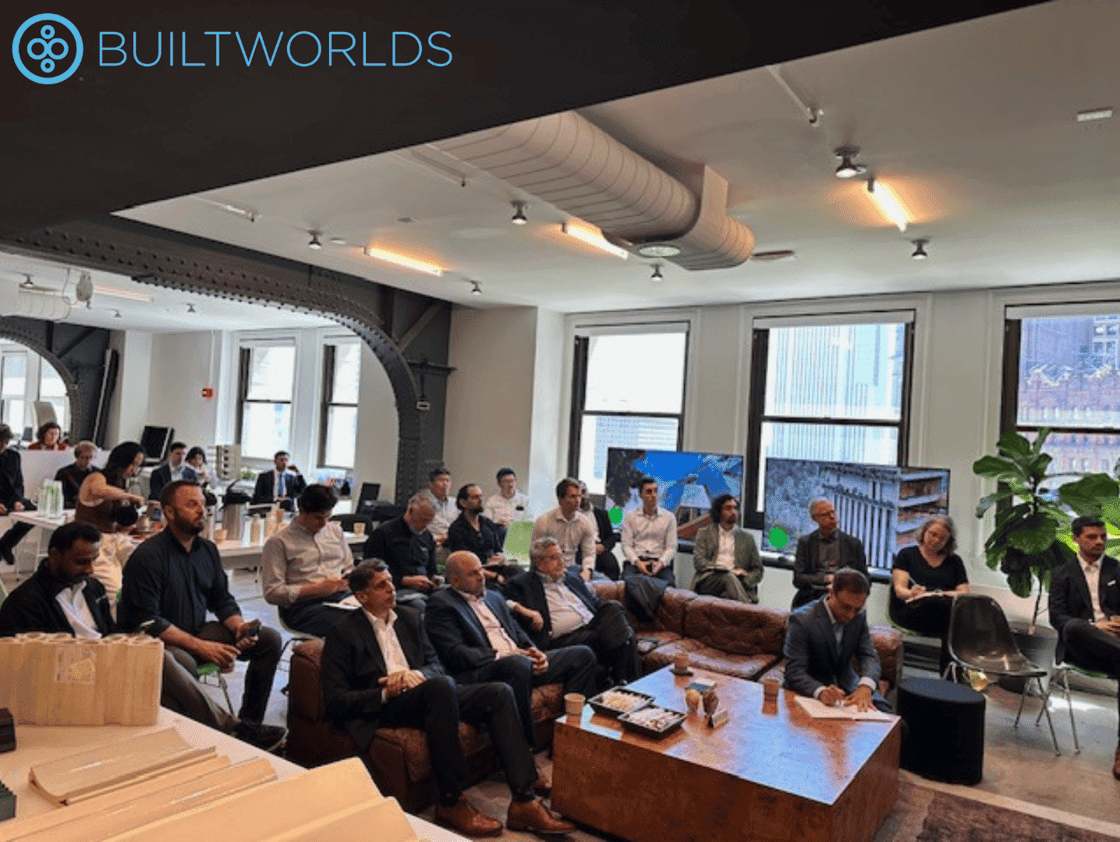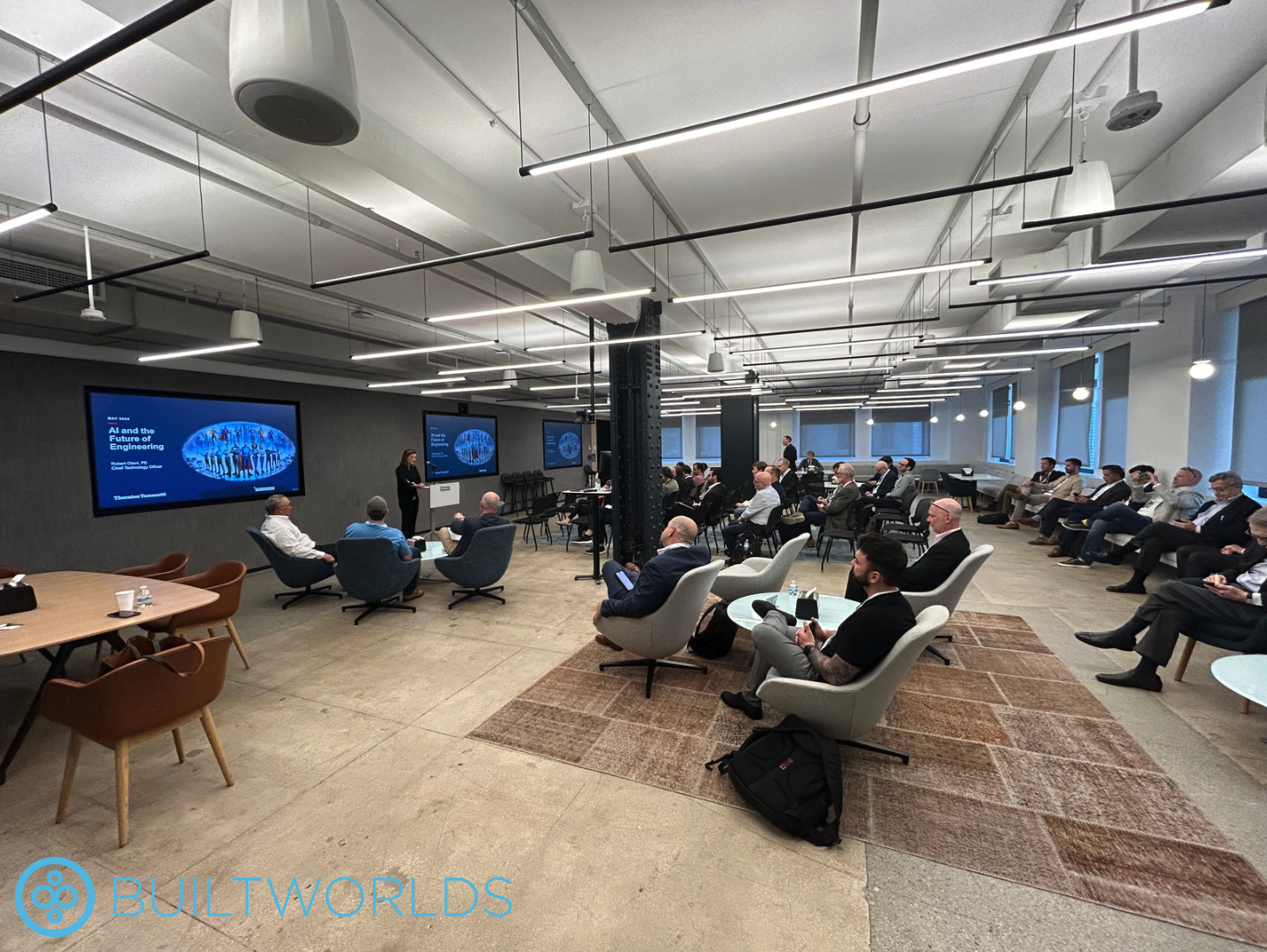
Embracing Innovation in a World of Uncertainty: Key Takeaways From the 2024 Buildings Conference
Whether it is maintaining effective communication with key project stakeholders or complying with complex regulatory standards, there are several universal challenges that architects, engineers, contractors, developers, and building operators all need to overcome. Despite this, and as existing solutions like IoT and Building Information Modeling (BIM) evolve to satisfy the current needs of the industry, and novel technology such as generative AI and advanced collaboration tools continue to emerge, there isn't a universal "tool" to help cut through the noise and understand where the industry should focus.
The recently concluded Buildings Conference in New York is part of BuiltWorlds' broader mission to connect industry leaders and drive the adoption of new technologies in the AECO sectors. From a packed demo competition featuring 10 startups looking to disrupt the space to industry giants generating upward of $5 billion annually, the 2024 Buildings Conference fostered conversation and provided attendees with a holistic view of what’s catalyzing change in the design, development, construction, and phases.
Among the many topics addressed over the two-day conference, three major themes stood out:
- Artificial intelligence (AI) and machine learning (ML) enabled solutions are continuing to gain traction, and are likely here to stay
- There are numerous ways to impact sustainability and decarbonization targets for a project, but the most effective is considering green building and operation strategies pre-design
- Innovation is stickiest when it comes from the top and trickles down—executives truly need to buy in
What People Are Saying
AI and its Impact
It comes as no surprise that AI and the use of large language models (LLMs) found their way into nearly every conversation. The opportunity and benefits of leveraging these technologies are undeniable, but a general weariness from attendees indicates that organizations are still struggling with data ownership standardization concerns.
During the AI/ML Research Track Meeting, Thornton Tomasetti's Chief Technology Officer Robert Otani discussed their internal modes of innovation and journey to restructure some 3.5 terabytes of data that was sitting unused. Understanding the ability and resources needed to accomplish this is the exception and not the norm, it seems that organizations are increasingly using a combination of their own data and synthetic/public data to train AI models.

Thorton Tomasetti's Executive Chairman Tom Scarangello likens this transition to the 'Napster moment.' Scarangello thinks a unified approach is key to unlocking the full potential of AI.
"Just as Napster set in motion the irreversible transformation of the music industry, AI platforms like OpenAI’s Chat GPT are disrupting traditional notions of data protection. In this new era, trying to silo their data as a business advantage may no longer be tenable or even advisable." Tom Scarangello, Executive Chairman, Thorton Tomasetti
Scarangello went on to argue that those who are proactive and embrace change collaboratively will be the most prosperous. In a time where technology can change so quickly, staying as close as you can to the early adopters may be the way to go.
Cultivating a Net Zero Future
Much like artificial intelligence and machine learning, sustainability, decarbonization, and achieving net-zero emissions was another hot topic throughout the event. Being in New York City, several locals were sure to reference Local Law 97's influence, which dictates that buildings over 25,000 square feet are required to meet new energy efficiency and greenhouse gas emissions limits as of 2024, with stricter limits coming into effect in 2030. The goal is to reduce the emissions produced by the city’s largest buildings by 40 percent by 2030 and to be net zero by 2050.
Check out what Pallavi Mantha had to say about the event and its ties to sustainability. Mantha, who is an associate in the Arup New York office with a focus on energy and carbon in the built environment, joined the session "Shaping the Future of Digitally Connected and Sustainable Cities" moderated by Melissa Marsh (Founder and CEO, PLASTARC) and also featured Bernd Oswald (Co-Founder, VP Business Development, Mergers and Acquisitions, Gropyus), John Cerone (Principal, SHoP), Paul Doherty (President & CEO, The Digit Group).

Top-Down Innovation Is King
Another clear theme that emerged from the 2024 Buildings Conference is the idea that innovation efforts are most sticky and effective when driven by executives. A speaker mentioned that even if an individual has the autonomy to influence the direction of an organization's tech stack, there won't be true buy-in without visible support and understanding from the top, which is supported in Ilkay Can-Standard's recount of the event:
"Change starts from the top. Owners and developers need to know what to ask for to avoid project delays, financial losses, and missed opportunities." Ilkay Can-Standard, Founder CEO, GENx Design & Technology
This notion was further supported during the Venture Forum Meeting in a panel showcasing the AEC Angels, a group comprised of executives from Thornton Tomasetti, SHoP Architects, Skyska Hennessy Group, and STO Building Group. The AEC Angels are focused on investing in AEC technology by leveraging their collective and individual industry-specific knowledge.
During the panel, the group discussed a few challenges and opportunities in creating internal tech ecosystems pulling from their experience leading prominent AEC firms and investing in emerging technology startups.






Discussion
Be the first to leave a comment.
You must be a member of the BuiltWorlds community to join the discussion.